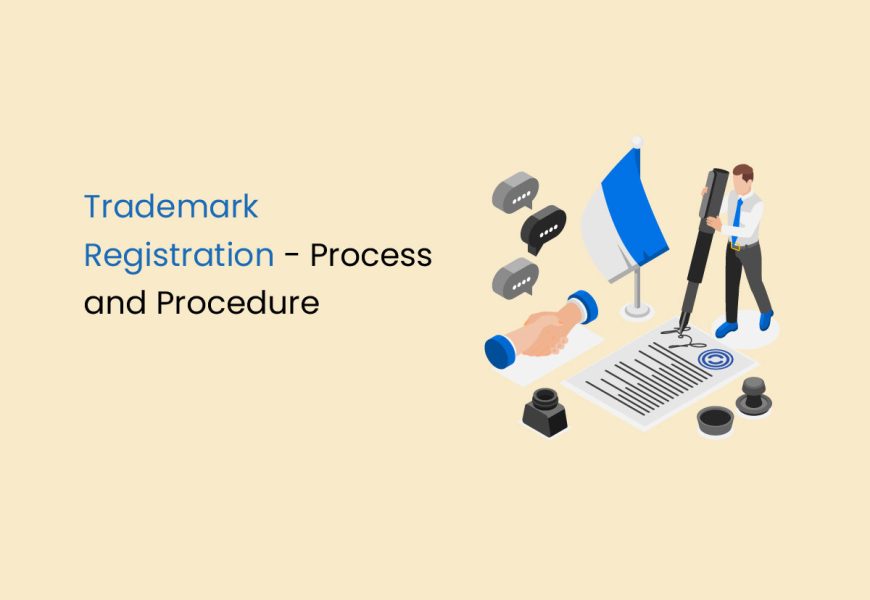In simplified terms, trademarks serve as unique symbols, like logos or expressions, that distinguish your company’s goods or services. They play a pivotal role in building brand identity, aiding customers in easily identifying and trusting your products. Classified as intellectual property, trademarks enjoy protection against infringement under the Trademark Act of 1999.
The significance of registering your trademark lies in securing its rights and thwarting attempts by others to copy or misrepresent your brand. Think of Nike’s distinctive tick or Puma’s leaping wildcat – instant brand recognition. Unlike patents, trademarks don’t adhere to a fixed expiration; initially valid for 10 years, they can be indefinitely renewed in additional 10-year intervals. This perpetual renewal ensures a continuous shield of protection for your brand under the Act. reason to know all you need to know about trademark registration.
Brand Name Trademarking
Securing a trademark for your company’s name is more than a legal formality; it’s a crucial step to safeguard your brand, reputation, and the creative endeavours you’ve poured your heart into. While the trademark registration process involves some time, the alternative of leaving your brand vulnerable to potential infringement lawsuits from larger entities is far riskier.
In India, the trademark registration process is now streamlined and accessible through the IP India Portal. You can register various elements, including letters, words, numbers, phrases, graphics, logos, sound marks, and even a combination of smells or colours. This comprehensive protection ensures that your brand is shielded from unauthorised use, reinforcing its unique identity in the market.
Trademark Registration
The inception of the trademark registry dates back to 1940, with the subsequent passage of the Trademark Act in 1999. Currently, the trademark registry serves as the operational body of the Act, responsible for executing all the stipulations outlined in the trademark law of India.
Situated in Mumbai, the head office of the trademark registry oversees branch offices in Delhi, Ahmedabad, Chennai, and Kolkata. Under the Trademark Act of 1999, trademarks undergo registration and are officially recorded in the Trademark Registry. This entails a meticulous examination by the registry to ensure that the proposed mark adheres to all the conditions specified in the Act before receiving formal registration.
Who Can Apply For a Trademark?
The right to apply for trademark registration rests with the trademark owner. In the Trademark Registration form, the individual, company, or LLP mentioned as the applicant will be officially recognised as the owner upon successful registration. This means that any individual, company, or Limited Liability Partnership (LLP) is eligible to be an applicant and submit the application to register a specific trademark.
How to Register a Trademark?
Registering a trademark involves a step-by-step process with careful considerations:
Choosing a Trademark
Select a unique and distinctive mark that represents your company. Identify the relevant class among the 45 classes of goods and services for registration (Classes 1-34 for goods, Classes 35-45 for services).
Mark Search
Conduct a trademark search to ensure your chosen mark isn’t similar to existing registrations. You can perform an online search on the Controller General of Patents, Designs, and Trademarks website. Alternatively, consider legal services for a more thorough search.
Filing Application
Use Form TM-A to file the application for one or multiple classes, series trademarks, or collective trademarks. The filing fee depends on your entity type:
- For non-startups, small enterprises, or individuals: Rs. 9,000 (e-filing) or Rs. 10,000 (physical filing).
- For startups, small enterprises, or individuals: Rs. 4,500 (e-filing) or Rs. 5,000 (physical filing).
Ensure accurate form completion to avoid delays or rejection. Attach a 9×5 cm picture of the trademark and submit the full file with two duplicates (five if requested). File online or physically, with online filing offering immediate confirmation and physical filing taking 15-20 days for confirmation.
Remember, precision in filing details is crucial to a successful application process.
Note: The fees mentioned are subject to change and may vary. It is advisable to check the latest fee structure.
Online Trademark Registration Procedure
The process is somewhat straightforward, follow the steps mentioned below:
Step 1: Choose a Distinctive Brand Name
Choosing a brand name is a crucial first step. Opt for something catchy and unique, as generic names may already be in use. Conduct quick research to ensure your chosen name isn’t already taken. This step allows you to invent or combine words to create a distinctive brand name.
Step 2: Prepare Trademark Application with Supporting Documents
Assemble the necessary documents for your trademark application. This includes business registration proof, identity and address proof of directors, a soft copy of the trademark, and proof of claim for the proposed mark in another country. Additionally, include a power of attorney signed by the applicant.
Step 3: File the Application for Brand Name Registration
Choose between manual filing and e-filing. If opting for manual filing, submit the application to the Registrar Office of Trade Marks and wait for acknowledgement, which takes 15-20 days. E-filing provides an instant acknowledgement on the government website.
Step 4: Examination of the Brand Name Application
The Registrar examines the application for compliance with legal terms and ensures there is no similarity with existing or pending brands. This step is essential to maintain uniqueness and legal adherence.
Step 5: Publication in Indian Trade Mark Journals
Upon successful examination, the brand name is published in the Indian trademark journal. During the next four months, no opposition should be raised against the registration. This publication phase is critical for public awareness and legal considerations.
Step 6: Trademark Opposition (If Applicable)
In case of opposition, you’ll receive a notice. Respond with a counter-statement within two months. This phase involves a legal process where both parties present evidence, and the Registrar issues an order of acceptance or rejection based on the arguments presented.
Step 7: Hearing on Trademark Opposition (If Applicable)
If a third party opposes your trademark, a hearing is scheduled after the submission of evidence. The Registrar considers the evidence from both sides and issues a final order. If no opposition occurs within four months, this step is skipped.
Step 8: Issuance of Trademark Registration Certificate
Upon successfully completing the process, the Registrar issues the Trademark Registration Certificate. From this moment, you can use the registered trademark symbol (®) alongside your brand name, signifying official recognition and protection.
This comprehensive process ensures legal protection for your brand, securing its uniqueness and preventing infringement by others.
Status of Application
After receiving confirmation of your application filing, you will be assigned an allotment number, enabling you to monitor its progress online. The approval or rejection status typically becomes available within 18-24 months, considering no issues with the filing. Prioritisation based on filing dates ensures that the longer the process takes, the higher priority your application receives. An additional advantage is that even before approval, you can use the TM symbol alongside your mark once you obtain the allotment number. Stay informed about your trademark application’s status throughout the process.
Things You Need To Know About Trademark Registration
A trademark stands as a crucial asset for any company, holding immense value in establishing brand identity. Serving as a visual symbol, it encompasses various elements such as words, names, numbers, labels, logos, or combinations of colours. This distinctive mark plays a pivotal role in shaping a company’s public image and facilitating customer recognition.
In India, the laws about trademarks and their registration are governed by the Trademark Act of 1999. The Controller General of Patents, Designs, and Trademarks oversee the registration process under the Ministry of Industry and Commerce, Government of India. This regulatory body, known as the Office of the Registrar of Trademarks, plays a key role in managing and safeguarding trademarks across the country.
Read about these 8 things that you need to know about trademark registration:
1. Diverse Types of Trademarks
Trademarks come in various forms, such as Word Marks, Service Marks, Logos, Symbols, Shapes of Goods, Series Marks, Collective Trademarks, Certification Marks, Geographical Indicators, Pattern Marks, Sound Marks, Colour Marks, and Three-Dimensional Marks.
2. Intangible Asset
A registered trademark becomes a valuable intangible asset for a business. It can be traded, franchised, commercially contracted, and distributed, contributing significantly to the company’s reputation and success.
3. Legal Protection Against Infringement
Owners of registered trademarks possess legal rights to take action against any infringement. They can sue third parties that use the trademark without prior permission, ensuring the protection of their logo, brand, or slogan.
4. Trademark Search
Conducting a trademark search is essential to check for existing trademarks. This can be done through the Indian Trademark Registry database or third-party service providers to ensure the uniqueness of the chosen trademark.
5. Class Selection
Goods and services are classified into 45 sectors, each known as a class. During the application, logos or brand names must be registered under the appropriate class. There are 34 product classes and 11 service classes.
6. Voluntary Registration
Registering a trademark is a voluntary process, providing concrete evidence of ownership. Legal decisions favour the party with a registered trademark, offering protection against unauthorised use.
7. Validity and Renewal
A registered trademark is valid for 10 years, after which it must be renewed. The renewal process can be initiated within one year before expiry. Failure to renew may result in removal, but the trademark can be reinstated through restoration.
8. Trademark Symbols
- TM and SM Symbols: Indicate that the trademark is not yet registered, but an application is pending.
- R (®) Symbol: Displayed upon approval, signifies official registration and warns against infringement.
- C (©) Symbol: Represents copyright for creative works, valid for a lifetime. Used with the copyright holder’s name and the year of the first publication.
To sum up, understanding trademarks and their registration involves navigating a complex process. Proper research and careful consideration are crucial to ensuring the numerous benefits of trademark registration are fully realised.
Why Do You Need Trademark Registration?
A trademark serves as a unique symbol, whether it’s a label, numeral, or a combination of colours, crucial for identifying goods or services. Under the Trademarks Act of 1999, obtaining trademark registration provides several advantages, contributing to the distinctiveness and protection of a brand.
Legal Protection
Trademarks, classified as intellectual property, gain protection from infringement upon registration. The exclusive right to use the trademark within the specified “Class” of goods or services is granted. The “TM” symbol can be used after applying, and the “R” symbol is employed post-registration. Legal recourse is available against unauthorised use.
Product Differentiation
Trademarks are specific to the goods or services they represent, aiding in product differentiation. This distinct identification facilitates a clear separation from competitors, creating a unique identity for your products within the market.
Brand Recognition
Trademark registration fosters brand recognition as customers associate product performance, quality, and features with the registered logo. Over time, brand recognition leads to the establishment of goodwill, making the brand recognisable and valuable in the market.
Creation of an Asset
Trademark registration transforms the brand into an intangible asset recognised for accounting and tax purposes. Trademarks, being intellectual property, hold a tangible value. They can be sold, franchised, assigned, or commercially exploited, contributing to the overall assets of a business.
Business Valuation and Goodwill
Registered trademarks elevate the business’s overall value, goodwill, and net worth. The trademark is a testament to quality assurance, distinctive product features, and organisational mission. It contributes to business growth, customer retention, and protection of goodwill.
Trademark Recognition
Trademark registration in India is valid for ten years, with the possibility of renewal. For businesses planning international expansion, the existing trademark registration serves as a foundational element to obtain registrations in other countries.
Business Expansion
A trademark establishes a connection between customers and the enterprise’s products, aiding in the creation and expansion of a customer base. With exclusive rights granted for ten years, businesses can leverage these benefits to introduce new products and expand their operations.
Trademark registration, beyond being a legal requirement, becomes a strategic tool for businesses to thrive, protect their identity, and foster growth in a competitive market.
FAQs about Trademark Registration
What does the Madrid Protocol entail?
The Madrid Protocol enables applicants to file a single international trademark application for multiple countries. For instance, if a mark is registered in India, the applicant can choose from 122 countries in the protocol for simultaneous filings.
What are the advantages of filing under the Madrid Protocol?
Benefits include common renewal dates, streamlined amendments through the WIPO, and cost-effectiveness.
How can one register a trademark under the Madrid Protocol?
The trademark must be registered or applied for in India. The Indian Trademark Office certifies details, and the application is forwarded to the WIPO. WIPO conducts a formal examination, publishes the application, and notifies trademark offices in selected countries.
What is the process of examination by the designated country's Trademark Office?
The designated country's Trademark Office examines the application and, within 12-18 months, conveys acceptance or refusal to the WIPO. The WIPO informs the applicant about the decision.
How is the advertisement and registration process in India carried out?
The mark is advertised in the Indian Trademarks Journal, open to opposition for four months. In the absence of opposition, the Indian Trademarks Registry grants protection.
Can amendments and renewals be made for Madrid Protocol applications?
Amendments for applications designating India can be made through WIPO. A single application filed at WIPO reflects changes in all designated countries. Renewals are subject to the rules of each designated country.





















